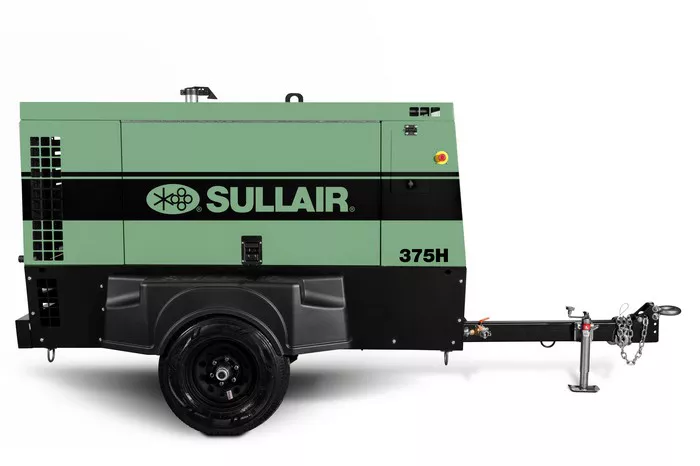Engines are the heart of countless machines, from automobiles and motorcycles to lawnmowers and generators. Among the many types of internal combustion engines, the 4-cycle engine, also known as a 4-stroke engine, is one of the most commonly used. This engine type is known for its efficiency, durability, and wide application in various industries.
In this article, we will explore the working principles, components, advantages, and applications of 4-cycle engines, along with a comparison to their counterpart, the 2-cycle engine.
What Is the 4-Cycle Engine
A 4-cycle engine operates through four distinct strokes (or cycles) within a single engine revolution: the intake stroke, compression stroke, power stroke, and exhaust stroke. Each stroke plays a crucial role in converting fuel into mechanical energy.
Intake Stroke
The intake stroke is the first step in the engine cycle. The piston moves downward in the cylinder, creating a vacuum that draws in a mixture of air and fuel. The intake valve opens to allow this mixture to enter the combustion chamber, while the exhaust valve remains closed.
Compression Stroke
Once the intake stroke is complete, the piston moves back up the cylinder, compressing the air-fuel mixture. This compression increases the pressure and temperature of the mixture, making it more combustible. Both the intake and exhaust valves remain closed during this process.
Power Stroke
The power stroke is where the actual energy production occurs. A spark plug ignites the compressed air-fuel mixture, creating an explosion. This explosion forces the piston downward with great force, transferring energy to the crankshaft, which ultimately powers the engine’s output.
Exhaust Stroke
Finally, in the exhaust stroke, the piston moves back up, pushing out the burnt gases from the combustion chamber through the open exhaust valve. Once the exhaust gases are expelled, the cycle repeats.
Components of a 4-Cycle Engine
A 4-cycle engine consists of several essential components, each playing a vital role in its operation. Below are the key components:
Cylinder
The cylinder is the chamber where the piston moves up and down during the engine cycle.
Piston
The piston is a cylindrical component that moves within the cylinder, compressing the air-fuel mixture and transferring power.
Crankshaft
The crankshaft converts the linear motion of the piston into rotational motion, which ultimately drives the machinery connected to the engine.
Connecting Rod
The connecting rod links the piston to the crankshaft, transferring the reciprocating motion of the piston into rotational motion.
Valves (Intake and Exhaust)
These valves control the flow of air-fuel mixture and exhaust gases in and out of the combustion chamber.
Camshaft
The camshaft controls the opening and closing of the intake and exhaust valves, ensuring proper timing.
Spark Plug
The spark plug provides the necessary spark to ignite the air-fuel mixture, initiating the power stroke.
Fuel System
The fuel system consists of the carburetor or fuel injectors, which deliver the appropriate amount of fuel to the combustion chamber.
Cooling System
A cooling system (air-cooled or liquid-cooled) helps maintain the engine’s temperature and prevents overheating.
Lubrication System
This system ensures that moving parts within the engine remain well-lubricated, reducing friction and wear.
Advantages of a 4-Cycle Engine
Fuel Efficiency
4-cycle engines are more fuel-efficient than 2-cycle engines because they use fuel more effectively, resulting in lower consumption.
Longer Lifespan
Due to better lubrication and lower operational stress, 4-cycle engines tend to have a longer lifespan than 2-cycle engines.
Lower Emissions
Since these engines burn fuel more efficiently, they produce fewer emissions, making them more environmentally friendly.
Smoother Operation
The power delivery in a 4-cycle engine is smoother compared to a 2-cycle engine, which tends to be more abrupt and less balanced.
Greater Torque Output
4-cycle engines provide more torque at lower RPMs, making them suitable for heavy-duty applications.
Applications of 4-Cycle Engines
Due to their efficiency, durability, and lower emissions, 4-cycle engines are widely used in various applications, including:
Automobiles: Cars and trucks rely on 4-cycle engines for their efficiency and longevity.
Motorcycles: Many motorcycles use 4-stroke engines for better fuel economy and performance.
Lawn Equipment: Lawnmowers, tillers, and tractors frequently use 4-cycle engines for their power and reliability.
Generators: Portable and standby generators employ 4-cycle engines to provide consistent power.
Marine Engines: Boats and personal watercraft benefit from the fuel efficiency of 4-cycle engines.
Industrial Machines: Many industrial machines use these engines for heavy-duty applications requiring extended operation hours.
Maintenance and Care
To ensure the longevity and efficiency of a 4-cycle engine, regular maintenance is essential. Here are some key maintenance tips:
Regular Oil Changes
Change the engine oil at recommended intervals to maintain proper lubrication.
Air Filter Cleaning/Replacement
A clean air filter ensures proper airflow and prevents contaminants from entering the engine.
Spark Plug Inspection
Check and replace spark plugs periodically to maintain optimal combustion.
Fuel System Maintenance
Use clean fuel and ensure the carburetor or injectors are in good condition.
Cooling System Check
For liquid-cooled engines, ensure the coolant is at the correct level and free of leaks.
Valve Adjustments
Periodic valve clearance adjustments help maintain efficient engine operation.
Conclusion
A 4-cycle engine is a fundamental component of many machines, known for its efficiency, durability, and lower emissions. Its structured cycle—intake, compression, power, and exhaust—ensures controlled combustion and reliable performance. Understanding its working principles and maintaining it properly ensures longevity and optimal function. Whether in automobiles, motorcycles, or industrial equipment, the 4-cycle engine remains a cornerstone of modern mechanical engineering.

